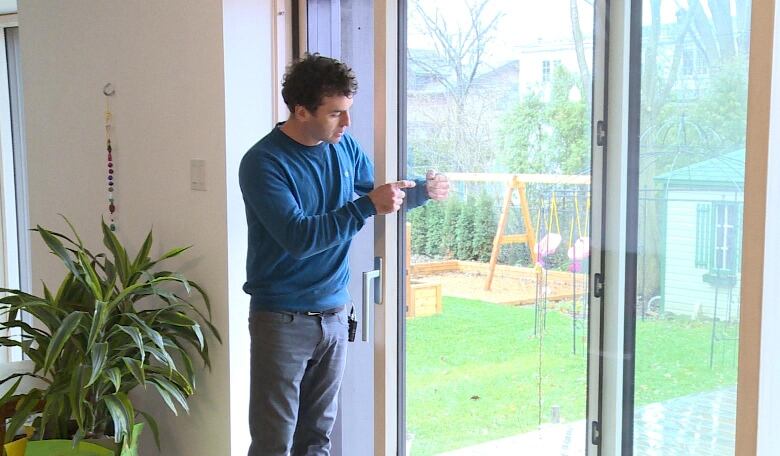Want to save big on your home heating? This Montreal family knows how
Passivhauses adhere to a rigorous, voluntary standard for energy efficiency

A family inMontreal'sAhuntsicneighbourhood has drastically reduced the amount of energy theirhome uses by tapping into a European trend.
Damienand DeborahChaverontransformed their old homeas closely as they could to followPassivhausguidelines.
Big in Europe, the Passivhaus movement is slowly gaining traction in Canada, where they are also known as "passive homes."
The housesadhere to a rigorous, voluntary standard for energy efficiency in a building.After they are built, theyrequirelittle energy for space heating or cooling and aresupposed to use 90per cent less energy than a standard house.

They hope to make their home a model in Canada. The couple spent about $400,000 for the partial demolition and construction of their home.
It cost about 10per cent more to retrofit their home toPassivHaus standards.
The specifics
The Chaveronscalled Richard Price, a builder whohas focused his career on building energy efficient homes. He said the key is having large windows facing south to maximize heat from the sun.
"One of the main things of thePassivhausare the super-efficient windows. Really well insulated, high-quality triple glazing so it's really thick and that much glass means that we get to keep all the heat within the house," he said.
Price tripled the required amount of insulation when retrofitting theChaverons' home.

"When we take a shower or a bath, we actually save the water, we gain the heat from it to preheat the water that goes into the hot water tank and then we use the water from the showers and the bath to flush the toilets," he said.
Another fundamental feature of thePassivhausisthe high performance ventilation system, according to Price.
"We preheat the air before it comes into the house, then we do the heat exchange in the ventilation system itself. That ensuresall the fresh air that goes to the rooms comes in at a warm, ambient temperature."
A 3,000-watt, 240-volt heater heats the entire 2,800 square foot home. Four small baseboard heaters provide supplementary heat, he said.
Is it worth it?
Critics, though, say striving for the title ofPassivhausisn't worth the payoff.
"The certification doesn't add to the quality of the house, it just adds recognition but it's very hard to justify paying so much more for the certification," said Daniel Boyer, an energy efficiency coordinator atcohabitation.
The Passivhausstandard limits energy used for heating to just 15 kWh/sq. m. In comparison, Boyer said an older home inMontrealwould use between 120 and150 kWh /sq. m.
Boyer said energy efficient homes get close enough to that mark without the added expense that comes with trying to attain the Passivhaus standard.
Waiting forPassivhaus certification
TheChaveronsare waiting to see if their home gets certified as a genuinePassivhaus. If it does, Price said it would be the first one inQuebec.

LEEDPlatinum buildings "contribute positively to the environment [...] while vastly minimizing the negative impacts that buildings generate."
DamienChaveronsaid he's not sure how much money he'll save in the long run, but that wasn't the motivation for refurbishing the house.
"For me it was more an investment in quality of life. Not feeling that we are using too much energy," he said.












_(720p).jpg)


 OFFICIAL HD MUSIC VIDEO.jpg)
.jpg)



























































































